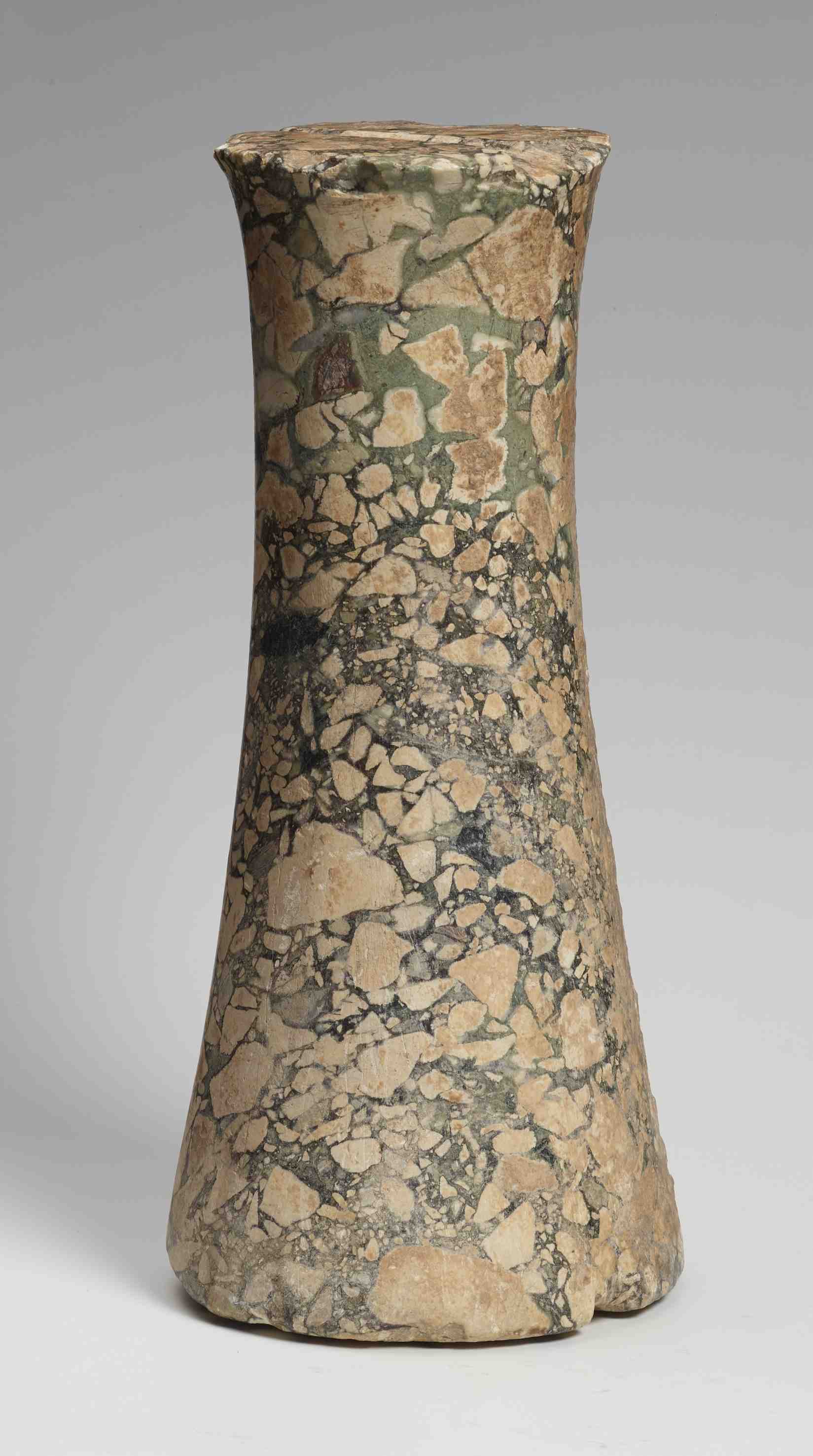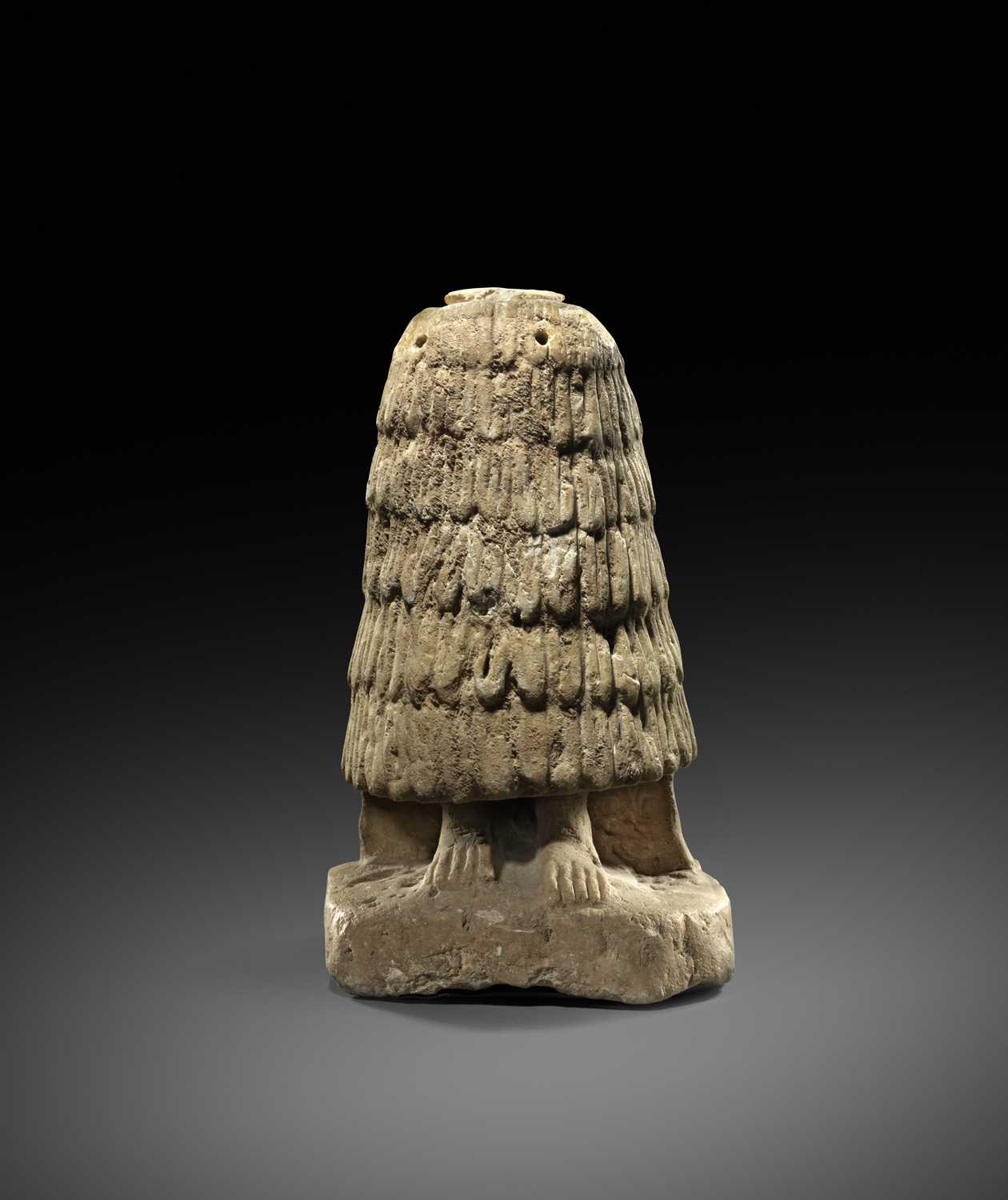Finely sculpted and superbly detailed Horus falcon, depicted standing with the talons splayed, the wings crossed over the tail, the feathers indicated by very careful incision, the head naturalistically sculpted with lidded round eyes, a short hooked beak, well-modelled detailed facial markings, wearing the double crown of Upper and Lower Egypt with uraeus, and a beaded collar with an amulet suspended from a cord on the breast. Mounted on a 19th century pedestal with old labels on the underside.
Note
The ancient Egyptians believed that their Pharaoh was an incarnation of the sky god Horus, who is frequently depicted as a falcon. The falcon was a strong symbol of protection of Egyptian kingship from the Old Kingdom (cf. E. Bleiberg, et al., Soulful Creatures, Animal Mummies in Ancient Egypt, no. 18 - falcon standing on the back of the 6th Dynasty Pharaoh Pepi I's throne on an alabaster statue in Brooklyn) and continuing throughout Egypt's long history (cf. D. Arnold, An Egyptian Bestiary no. 50 - graywacke falcon with the 30th Dynasty Pharaoh Nectanebo II standing between its talons). According to Bleiberg (op. cit., 22) the falcon not only symbolized Egyptian kingship, but "was also a manifestation of the sun god. A falcon's soaring flight and keen eyesight embodied essential aspects of the god Horus, who often appears as this bird of prey."
The ancient Egyptians worshipped a number of different falcon deities, although the presence of the double crown on the example presented here confirms that Horus was intended. Bronze falcon statues of this scale frequently served as a coffin for a mummified falcon which would have been dedicated at a sanctuary by pilgrims either in anticipation of prayers to be answered or in thanks for petitions already granted (cf. R.S. Bianchi, et al., Egyptian Bronzes, Fondation Gandur pour L'art, 222).
Octave Homberg (1876-1941)
Octave Marie Joseph Kérim Homberg, Jr. born on 19 January 1876 in Paris, France  to Octave Homberg, Sr. (1844-1907) was a French diplomat, banker, author and one of France's foremost financiers.
to Octave Homberg, Sr. (1844-1907) was a French diplomat, banker, author and one of France's foremost financiers.
During World War I he appealed to the United States and the United Kingdom for loans for the financing of France's war spending and participated in the 1915 Anglo-French Financial Commission. He also headed the commission of bankers and economists in France in 1917 and was a leader in the movement to stabilize the franc in the post-WW I period.
On 12 November 1920, he founded the French investment bank Société financière française et coloniale, (SFFC) - a French investment bank that was an active investor in colonial ventures, particularly in the 1920s. The new company was designed to channel investments in colonial ventures, primarily though not exclusively in French Indochina, which the Banque de l'Indochine was too cautious to undertake on its own. It was strongly supported by Lazard until a dispute in 1926. Furthermore he served as administrator of the Franco-Ethiopian railroad from Djibouti to Addis Ababa. He died on 9 July 1941at the Palais Bellevue in Cannes, France.








